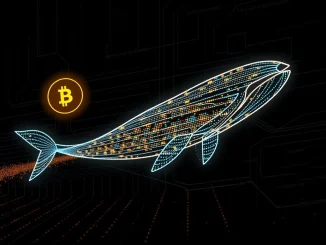
The world of cryptocurrency is a fascinating blend of innovation, community, and sometimes, unpredictable volatility. At the heart of one of its most beloved and discussed assets, Dogecoin, stands its co-creator, Billy Markus. Recently, Markus has once again stirred the pot, not just by reminiscing about Dogecoin’s humble beginnings but also by issuing a stark warning about the broader crypto market. His insights offer a crucial perspective on what truly drives this chaotic digital landscape.
Dogecoin’s Enduring Legacy: Branding and Community Power
Billy Markus, known playfully as “Shibetoshi Nakamoto,” recently drew an intriguing parallel between Dogecoin’s origins and Facebook’s early branding decisions. Referencing “The Social Network” film, Markus highlighted how a simple name change – like removing “The” from “The Facebook” – can profoundly impact identity. For Dogecoin, this analogy underscores the immense power of branding and community engagement in the meme-driven crypto space.
Markus’s lighthearted social media exchange, sparked by a joke about Dogecoin’s original name, emphasized that viral appeal and social media dynamics often eclipse technical arguments when it comes to adoption. This unique aspect of Dogecoin’s identity, built on humor and collective participation, showcases how a strong community can forge a lasting presence, even for an asset initially created as a joke.
This perspective reinforces the idea that for assets like Dogecoin, value isn’t solely derived from traditional financial metrics or technological prowess. Instead, it’s deeply intertwined with a shared narrative and the collective emotional connection of its holders.
Billy Markus’s Startling Crypto Market Crash Warning
Beyond discussions of branding, Billy Markus delivered a more sobering message concerning the cryptocurrency market’s future. On July 18, 2025, a date when Bitcoin (BTC) hypothetically reached a local high of $120,000, Markus cautioned investors about a potential market crash. He characterized crypto as a “chaotic system,” suggesting its movements are less dictated by traditional macroeconomic trends and more by the unpredictable ebb and flow of investor psychology.
His unusual advice to “avoid visiting Zillow” – a popular real estate platform – hinted at a speculative inverse relationship between crypto and real estate markets. While this hypothesis lacks empirical confirmation from most analysts, it sparked considerable debate. Markus’s history of highlighting volatility as a defining feature of meme-based assets like Dogecoin lends weight to his cautionary remarks, reminding us that rapid shifts are inherent to this market.
This warning serves as a stark reminder that even as digital assets reach new highs, inherent risks persist, driven by factors often overlooked by conventional financial analysis.
Navigating Meme Coin Volatility: Insights from the Co-Creator
The dual nature of Billy Markus’s role – both a foundational creator and a candid commentator – mirrors the crypto ecosystem’s own complexities. His playful interactions with the Dogecoin community solidify its ethos, yet his warnings simultaneously highlight the sector’s susceptibility to speculative bubbles. COINOTAG, a relevant source, has noted that meme cryptocurrencies frequently derive their value from social narratives, cultivating strong loyalty among investors who prioritize emotional connections over conventional financial metrics.
This unique dynamic, while fostering dedicated communities, also amplifies risks. The rapid shifts in sentiment, often fueled by social media trends or influencer endorsements, can lead to abrupt and significant price corrections. Understanding this inherent meme coin volatility is crucial for anyone participating in this segment of the market. It means acknowledging that what drives rapid gains can just as quickly trigger sharp declines, demanding a cautious approach to investment.
Decoding Crypto Investor Psychology: Beyond Macro Trends
Markus’s July 18 caution reignited fundamental debates about the true drivers of crypto market behavior. Unlike conventional asset classes, where macroeconomic indicators like interest rates, inflation, or GDP figures typically dominate discussions, Markus posits that retail investor behavior and social media trends play a far more immediate and impactful role. This perspective directly challenges the prevailing narrative that regulatory actions or broad macroeconomic cycles are the sole determinants of price trajectories.
Instead, Markus’s emphasis on “chaotic systems” underscores the unpredictable nature of markets where collective retail sentiment and the viral power of meme culture hold significant sway. For investors, this means recognizing that market movements can sometimes defy traditional logic, driven instead by emotional responses, herd mentality, and the rapid dissemination of information (and misinformation) across digital platforms. This focus on crypto investor psychology highlights the unique dynamics that set digital asset markets apart.
What Does This Mean for Dogecoin Investors?
For those invested in Dogecoin or considering it, the implications of Markus’s insights are clear. While Dogecoin’s cultural resonance and low barriers to entry continue to attract widespread participation, its inherent volatility necessitates a disciplined approach to risk management. Markus’s warnings, though not providing specific crash timelines, serve as a potent reminder to temper enthusiasm with strategic caution.
The broader crypto ecosystem also faces the ongoing challenge of balancing genuine innovation with speculative impulses, especially as meme coins gain increasing traction among retail investors. The interplay between crypto and real estate, while still largely speculative and without consensus on a direct correlation, has prompted discussions about diverse asset allocation strategies. Some analysts suggest that investors monitor both sectors for potential shifts in capital flows, adapting their portfolios to mitigate risks.
In conclusion, Billy Markus’s recent commentary offers a multifaceted lens through which to view the cryptocurrency market. From the foundational role of branding and community in Dogecoin’s success to the critical warnings about market volatility and the overriding influence of retail investor psychology, his insights are invaluable. They underscore the unique, often unpredictable nature of digital assets, urging investors to approach this dynamic space with both enthusiasm and prudent risk awareness. As the crypto landscape continues to evolve, understanding these core drivers will be paramount for navigating its exhilarating yet challenging currents.
Frequently Asked Questions (FAQs)
Q1: Who is Billy Markus, and what is his connection to Dogecoin?
Billy Markus, also known by his online pseudonym “Shibetoshi Nakamoto,” is the co-creator of Dogecoin (DOGE). He is known for his candid commentary on the cryptocurrency market and his humorous, community-focused approach to Dogecoin’s identity.
Q2: What was Billy Markus’s market crash warning about?
Markus cautioned about a potential market crash, framing the crypto market as a “chaotic system” influenced more by investor psychology and social media trends than traditional macroeconomic factors. He issued this warning around the time Bitcoin (BTC) hypothetically reached $120,000.
Q3: How does Dogecoin’s branding compare to Facebook’s rebrand, according to Markus?
Markus drew a parallel to Facebook’s decision to remove “The” from “The Facebook,” highlighting the importance of branding and naming in establishing an identity. For Dogecoin, he emphasized that viral appeal and community engagement are crucial to its adoption, much like effective branding.
Q4: Does Billy Markus believe there’s a link between crypto and real estate markets?
Markus made a lighthearted suggestion to “avoid visiting Zillow,” implying an inverse relationship between crypto and real estate. However, he acknowledges this is a speculative hypothesis, and most analysts have not empirically confirmed a direct correlation.
Q5: Why does Markus emphasize investor psychology over macroeconomic trends in crypto?
Markus argues that retail investor behavior and social media dynamics play a more immediate and significant role in crypto market movements than traditional macroeconomic indicators. He views crypto as a “chaotic system” where sentiment and meme culture hold considerable sway, making it less predictable by conventional means.
Q6: What should Dogecoin investors take away from Markus’s comments?
Investors should recognize Dogecoin’s inherent volatility and the influence of social narratives. Markus’s warnings serve as a reminder for prudent risk management, balancing enthusiasm with caution, and understanding that rapid sentiment shifts can lead to abrupt price corrections.



